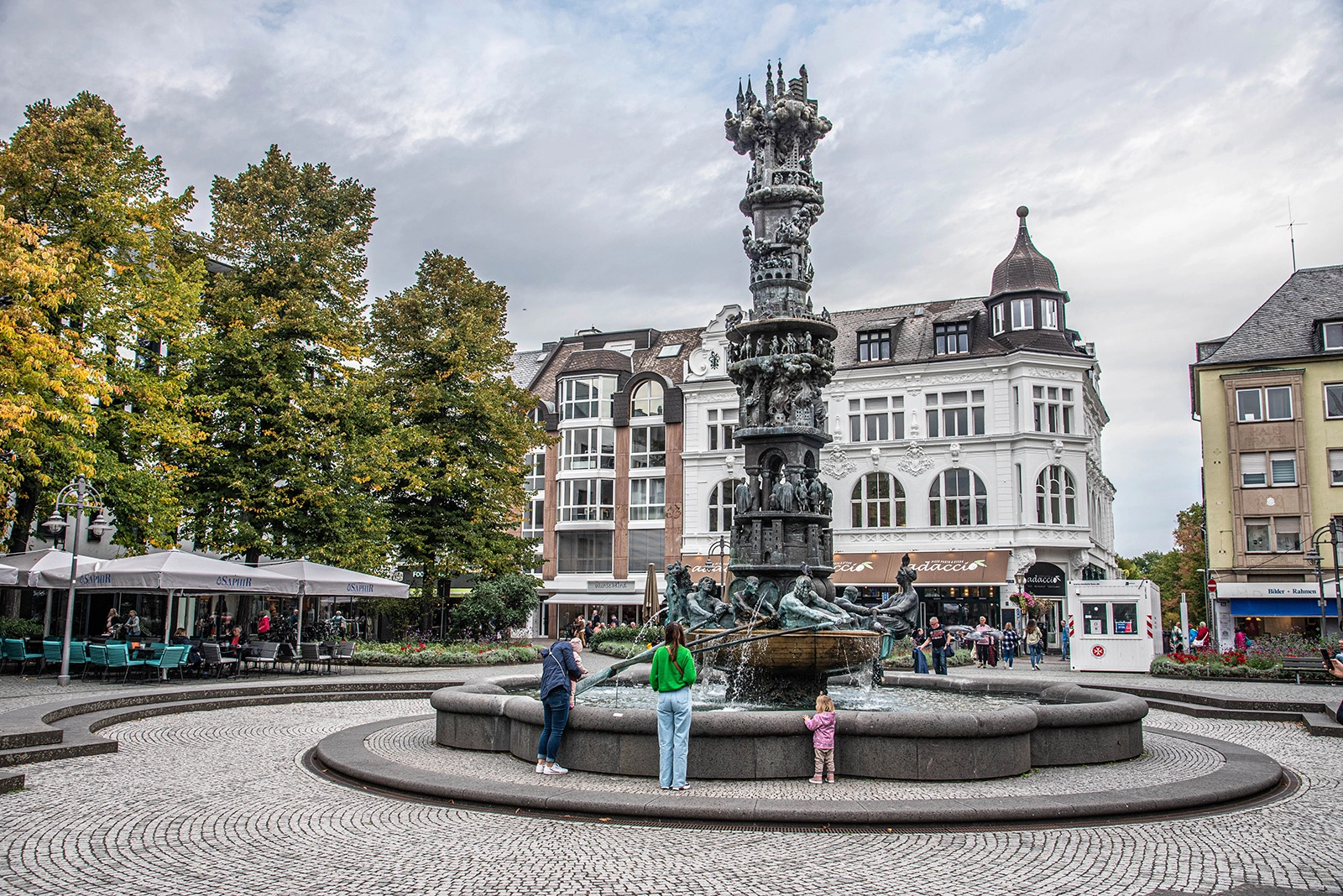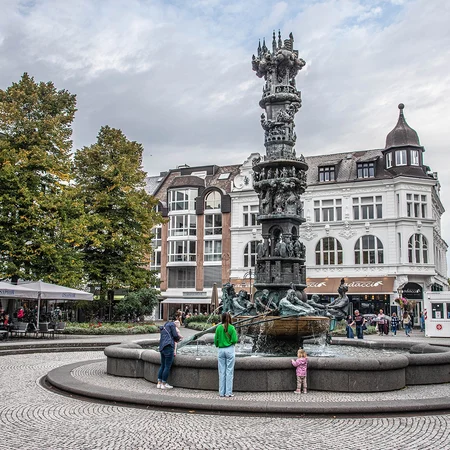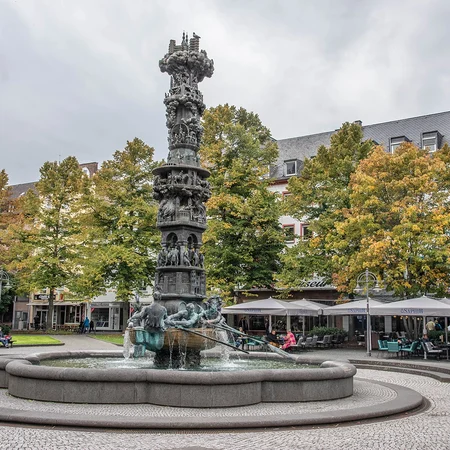If you take a stroll through Koblenz’s old town centre, you will find some beautiful squares. One of them is Görresplatz square Koblenz with its impressive historical column (Historiensäule) in the centre. During the Second World War, bombs destroyed parts of the historic buildings on the square. Later, modern buildings replaced the gaps. What characterises the square is the beautiful planting. Colourful flower beds, green lawns and tall trees make up the square and invite you to relax here. You can use one of the park benches or take a seat in one of the cafés.
The real attraction of Görresplatz is the Koblenz History Column. You will find it in the centre of the square. You can’t miss it. Over ten metres high, it rises out of a fountain. The Koblenz History Column tells the story of important stages in the history of Koblenz. Take a look at it.
Ten scenes from 2000 years of city history
The Koblenz history column shows the 2000-year history of Koblenz in ten scenes. The first scene is based on a four-metre-long wine ship. It is rowed by four naked slaves and steered by a Roman lady of the vineyard. This is reminiscent of the Roman era in Koblenz. A water feature lets the ship fill up and overflow. Wine barrels are placed above it. As you know, Koblenz is located in a wine-growing region.
If you look further up the Koblenz history column, you will see the Roman city “Apud confluentes”. A very central point in European history was the division of Charlemagne’s Frankish Empire. The foundations for this were laid in the Basilica St. Castor. The history column is dedicated to this period with a picture of a Frankish royal court and conference venue from the 6th to 9th centuries. The Crusades took place between the 12th and 13th centuries. Another picture on the Koblenz history column is dedicated to this period. This is followed by a picture of flourishing towns (craftsmen, merchants, church dignitaries, figures with horses) from the 13th to 16th centuries.
The Thirty Years’ War and the witch craze were bitter times. The history column shows the city skyline from this era. Further images recall the French Revolution and the Prussian era. At the top of the Koblenz history column, the destruction caused by air raids in 1944 during the Second World War is shown. This is followed by the reconstruction.
History: Rhineland-Palatinate donates the history column to Koblenz for the 2000th anniversary celebrations
The Koblenz History Column was donated to the city by the state of Rhineland-Palatinate in 1992 for the 2000th anniversary celebrations. The fountain with history column was completed on 1 June 2000. 10.59 meters high and weighing 3.6 tons, the Koblenz history column was designed by sculptor Jürgen Weber.
Special tips: Read the scenes of the Koblenz history column on panels
Around Görresplatz you will find plaques describing the scenes on the history column. Take your time to discover the details of the history column. Walk around it and transport yourself to other times. Times of peace and prosperity alternate with times of war and destruction.
Surroundings: Enjoy the beautiful old town of Koblenz
At Görresplatz you are in the old town of Koblenz. Stroll through the alleyways and enjoy historic Koblenz. Not far away is Jesuit Square (Jesuitenplatz), where you can admire the beautiful town houses that line the square. Of course, you will also find cafés and inns to stop off at. A passageway leads you to the town hall. In the romantic inner courtyard you will find the Koblenz Schängelbrunnen fountain, which will spit at you if you get too close.
If you have time, visit the German Corner (Deutsches Eck), where the Moselle and Rhine rivers meet. You can easily reach the monumental Kaiser Wilhelm Memorial on foot. An impressive sight awaits you on site – a real highlight.



